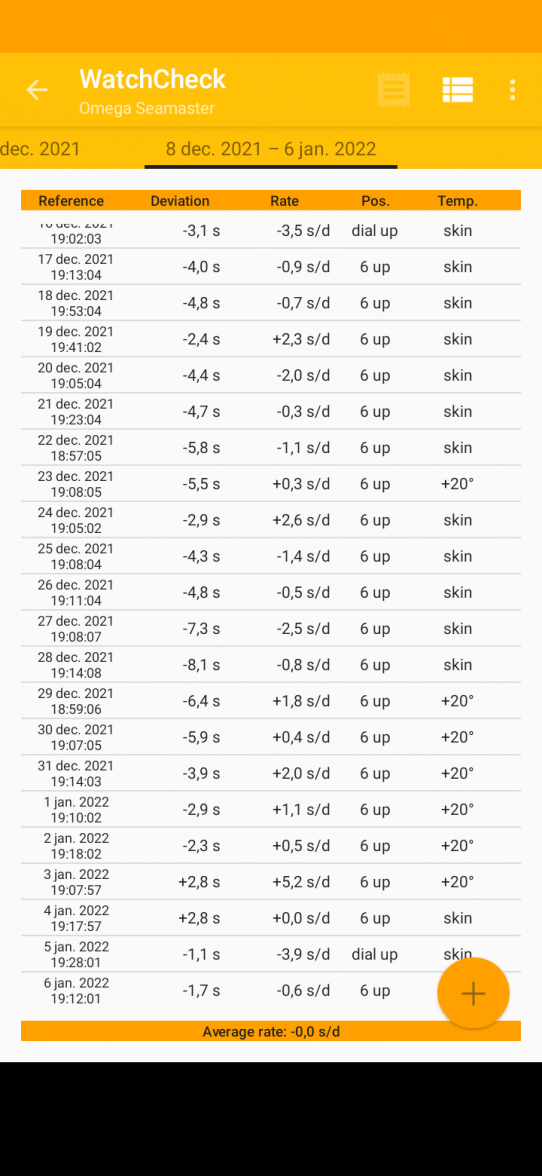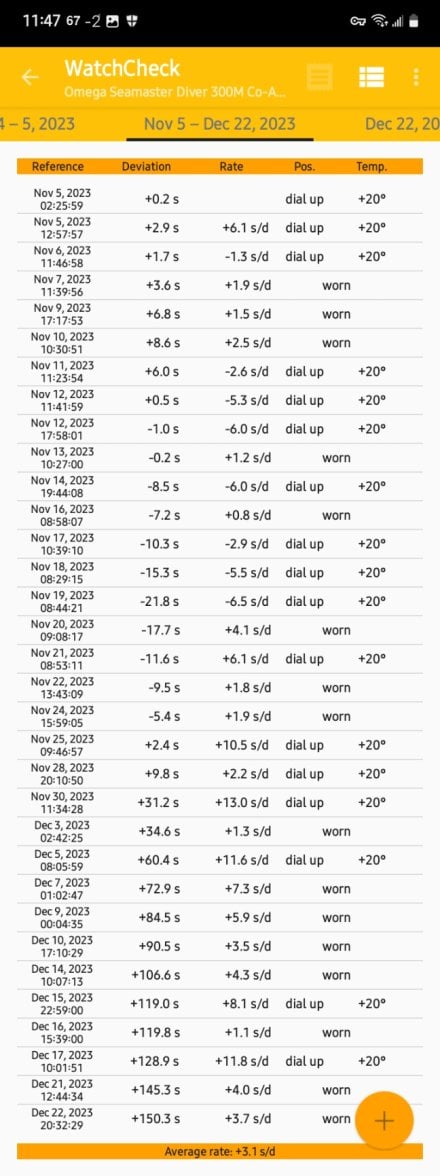Leviathan
·I’ve cracked the code with Omega’s caliber 8800. On my wrist for two thirds of the day, and the watch gains 1.5 seconds. For the remainder third (overnight), the watch lies dial up (roughly 30 degrees up) and loses the 1.5 seconds.
I’m still perfectly synced to atomic time since I’ve last calibrated the watch on Dec. 26th, 2021. That’s 0 gained/lost overall seconds since then.
Anyone else with a similar experience?
I’m still perfectly synced to atomic time since I’ve last calibrated the watch on Dec. 26th, 2021. That’s 0 gained/lost overall seconds since then.
Anyone else with a similar experience?


